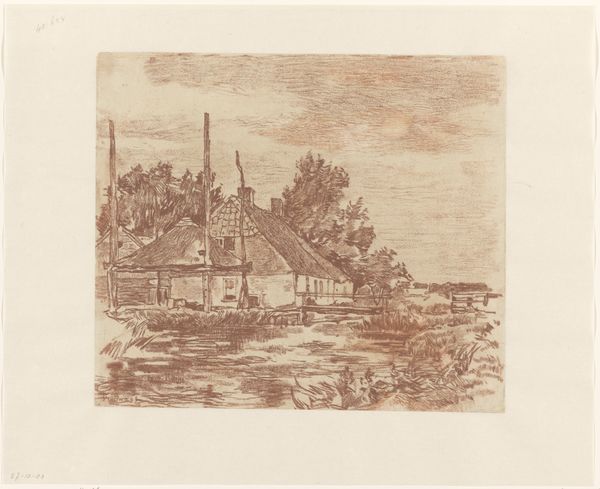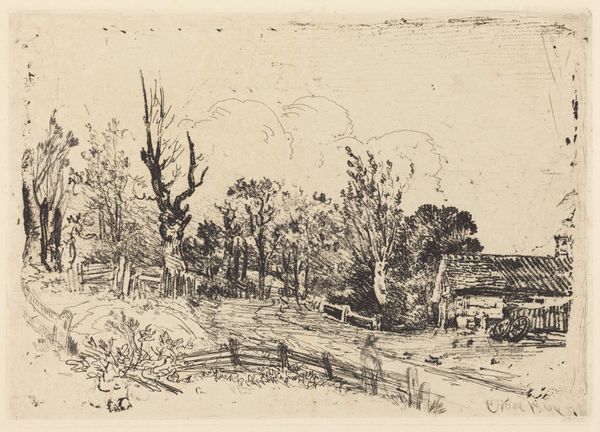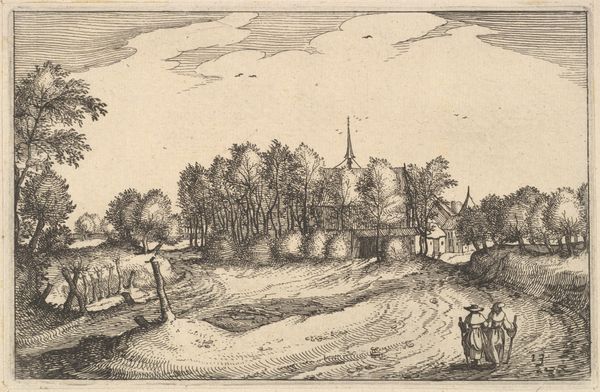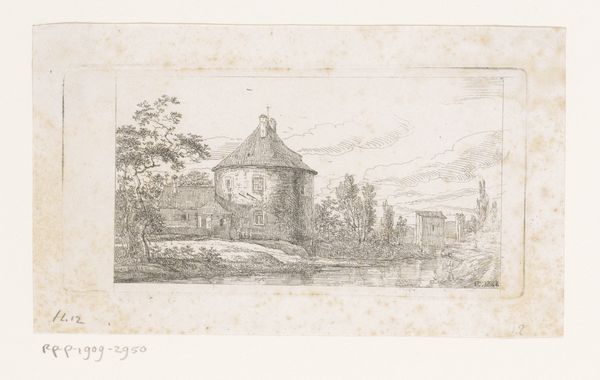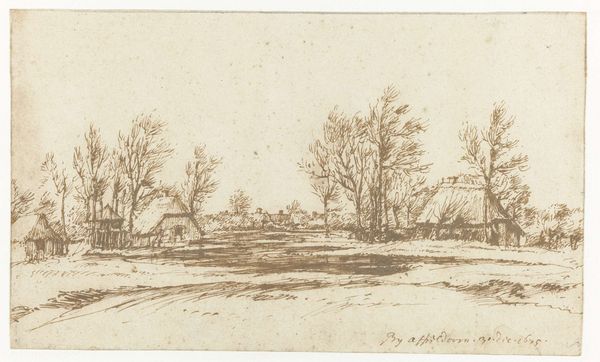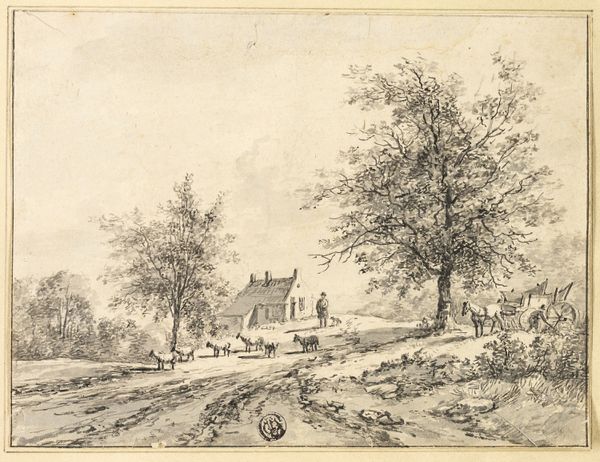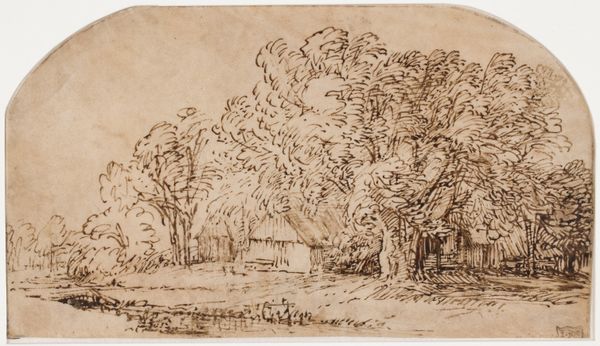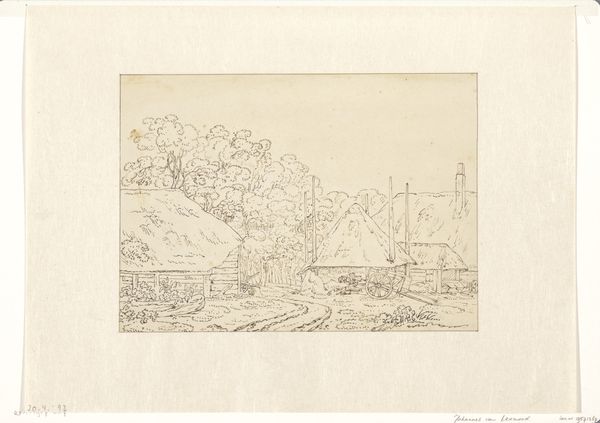
Weidelandschaft bei tiefstehender Sonne mit einem von Bäumen verdeckten Dorf mit spitzem Kirchturm
0:00
0:00
drawing, ink
#
drawing
#
landscape
#
ink
#
15_18th-century
Copyright: Public Domain
Curator: Ah, this serene ink drawing captures a “Weidelandschaft bei tiefstehender Sonne mit einem von B\u00e4umen verdeckten Dorf mit spitzem Kirchturm” or, translated, a pasture landscape in the low sun, village and towering spire partially obscured by trees. It resides here at the Städel Museum and is credited to Franz Kobell. Editor: Immediately striking. There’s a stillness and quiet about it despite all that intricate, scribbly linework. It gives me a real sense of being there, watching the day fade. Curator: Kobell’s economy of line is masterful here. Note the cross-hatching used to define form and shadow, constructing the shapes of the trees and suggesting the rough texture of the landscape. And how the starkness of the bare paper amplifies the sunset mood of this ink drawing. Editor: It's interesting how he suggests so much with so little. I'm thinking about the labor that went into creating such scenes, documenting the agrarian lives and church-centric organization of rural life at this time. The raw materials themselves speak volumes about the period. What paper was readily available? What kind of inks? Curator: That's an excellent point! While difficult to confirm definitively since we are unsure about the creation date, the accessibility of the medium undoubtedly influenced its ubiquity in artistic practice. Think about the cost of pigments versus ink in that era. Also the paper’s probably handmade, seeing as this was most likely completed sometime in the 18th century. Editor: Right, handmade paper speaks to a specific social and economic class with access to particular resources. But look at the ordinary folk, tending the livestock here! Are we looking at the idealization of labor, a sanitized vision presented by an artist working for patrons with potentially conflicting social ideals? It is so easy to forget that rural existence often carried heavy burdens in that epoch. Curator: A very important counterpoint, emphasizing how even pastoral images are rooted in the specific cultural moment of its creation. The political context in which such idealized views thrived. Editor: Precisely. It’s not just a pretty picture, but a carefully constructed narrative shaped by institutions and cultural forces. And speaking from my point of view, the weight of time this museum's very own patronage brings. Curator: Yes. Reflecting on our conversation, seeing the intersections between labor, history, the hand of the artist, makes me realize there are always complex processes at play, within something that looks at first very serene and unassuming.
Comments
No comments
Be the first to comment and join the conversation on the ultimate creative platform.


